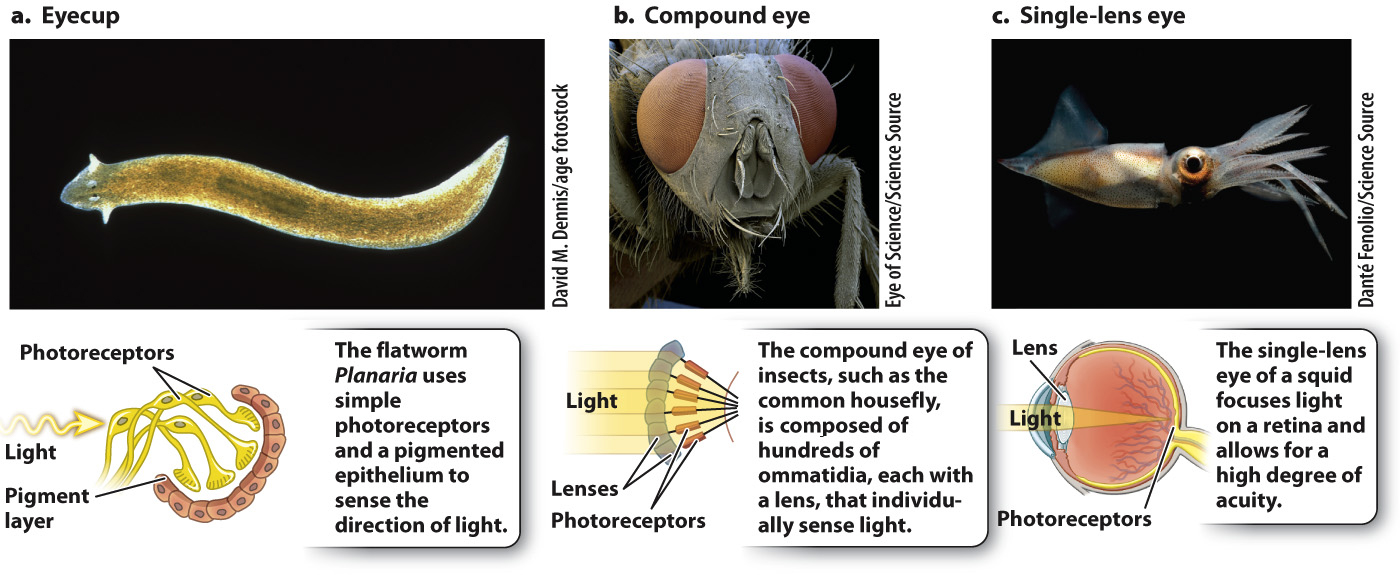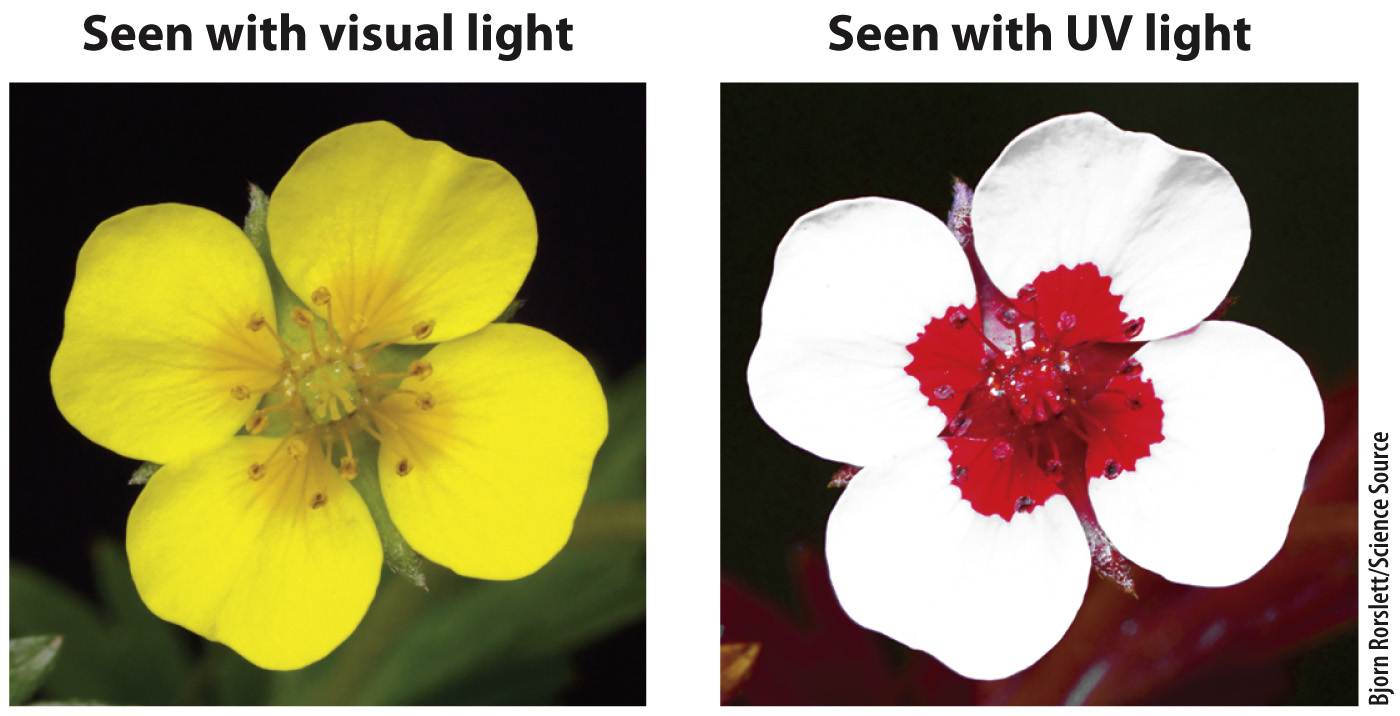Animals see the world through different types of eyes.
Although opsins are the universal photoreceptor protein among animals, the way the visual world is perceived—what it looks like to the organism—depends on the structure of the eye in which the receptors are embedded. Here, we look at the three main types of eye structure shown in Fig. 36.11: eyecups, compound eyes, and single-lens eyes. Each has very different capabilities.

FIG. 36.11 Three types of eye.
Photo sources: a. David M. Dennis/age fotostock; b. Eye of Science/Science Source; c. Danté Fenolio/Science Source.
In flatworms, two simple eyecups on the back surface of the head detect the direction and intensity of light sources (Fig. 36.11a). Each eyecup contains photoreceptors that point up and to the left or right. A pigmented epithelium blocks light from behind, so the photoreceptors receive light only from above and in front of the animal. In response to light, flatworms turn to move directly away from the light source, seeking a dark region that hides them from potential predators. To find a dark region, the flatworm nervous system compares the light intensity received by photoreceptors of the two eyecups, and then moves in the direction of lower light intensity. Many invertebrates use simple light-sensitive photoreceptors in a similar way.
A key innovation for detecting images was the evolution of a lens. Two major types of image-forming eye evolved in other invertebrates: compound eyes and single-lens eyes. Insects and crustaceans have compound eyes that consist of individual light-focusing elements, each having a lens, called ommatidia (singular, ommatidium) (Fig. 36.11b). The number of ommatidia in the eye determines the resolution, or sharpness, of the image. The compound eyes of ants have only a few ommatidia, and those of fruit flies have about 800. In contrast, the eyes of dragonflies have 10,000 or more. Dragonflies are predators, and their high number of ommatidia is an adaptation for visually tracking their prey.
Page 772
Within a single ommatidium, light is focused through a lens onto a central region formed from multiple overlapping photoreceptors. Each ommatidium is sensitive to a narrow angle of light (about 1° to 2°) in the animal’s visual field. Compound eyes of insects and crustaceans provide a mosaic image because individual light regions are sensed by separate ommatidia. It is likely that the image is sharpened within the brain, but the resolution of images produced by compound eyes is not nearly as good as that produced by single-lens eyes. Nevertheless, compound eyes are extremely good at detecting motion and rapid flashes of light, more than 300 per second compared with 50 per second for a human eye. Insect eyes also have good color vision, and many insects can perceive ultraviolet light. Many pollinating insects sense UV light to locate the flowers they prefer to visit for nectar (Fig. 36.12).

FIG. 36.12 The same flower seen with visual and UV light. Many pollinating insects see ultraviolet light, which can dramatically alter the image that attracts them to a particular flower.
The single-lens eyes of vertebrates and cephalopod mollusks like squid and octopus work like a camera to produce a sharply defined image of the animal’s visual field (see Fig. 36.11c). In spite of their similar outward appearance, there is clear evidence that single-lens eyes evolved independently in vertebrates and in some mollusks (Fig. 36.13). Other invertebrates, such as some spiders and annelid worms, also evolved single-lens eyes independently. An advantage of single-lens eyes compared to compound eyes is that the single lens can focus light rays on a particular region of photoreceptors, improving both image quality and light sensitivity. As a result, animals with single-lens eyes can detect prey effectively by their motion and shape.

FIG. 36.13 Convergent evolution of single-lens eyes. Single-lens eyes evolved independently in vertebrates (fish and mammals) and in some mollusks (octopus and squid).
Page 773
We focus much of our subsequent discussion on the human eye, but many of its organizational features and properties apply to vertebrates more generally.


